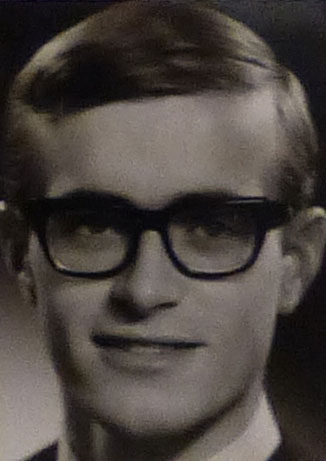
Although it might be uncommon for engineers to become journalists, it isn’t impossible—just ask Jim Kenzie (IndE 6T6). The industrial engineer-turned-writer has spent the better part of the past three decades covering the automotive beat for the Toronto Star’s Wheels section.
Renowned as one of North America’s most respected automotive journalists, Kenzie was a founding member of the Automobile Journalists Association of Canada, sits on a number of industry awards juries and regularly appears on TSN’s Motoring, a favourite television program among car enthusiasts. He also co-founded Targa Newfoundland, a rally he regularly competes in.
U of T Engineering’s Jamie Hunter caught up with Kenzie to talk about his days at Skule™, how his automotive writing benefits from his engineering background and the one car he’d bring to a desert island racetrack.
Can you recall a standout moment from your days at U of T Engineering?
Perhaps the story I tell most often is on the first day, during the first lecture, Professor L.E. (Ted) Jones (MIE) gave us the “look to your left, look to your right, only one of you is going to be here next year” speech. We were all sitting there thinking, “Look at all you suckers! I’m the smartest guy to come out of my high school. You guys are all toast.” And it took me a while to realize that everyone there was the smartest guy to come out of their high school. It gives you an entirely new frame of which to see things. You realize that the whole world is pretty smart when you get to this level.

What did you do for a living prior to your career as an automotive writer?
When you left industrial engineering back in those days, the choices were either classic industrial engineering—time and motion study and that kind of thing—or a relatively new field that had to do with computers. I hated computing at the time. We had to write two computer programs in our programming course—neither of the ones I wrote ever worked. I thought, “That’s the last time I’m ever going to deal with this. Thankfully, computers are just a passing phase that nobody will ever care about.” Obviously, I didn’t really have a grasp on what the future held in that regard.
But when the time came to try to find something to do with my life, I had this vision of some bespectacled, Joe College, 140-pound geek walking into a factory and telling some former Hamilton Tiger-Cats linebacker he wasn’t working fast enough according to the pace that was in my little book. I didn’t see that as being a life-enhancing strategy. So I went for computer programming, interviewed with Procter & Gamble and was accepted into their training program. That’s how I got into the data processing world. Then I ended up teaching data processing over at Ryerson University for nine years—I needed the summers off to enjoy my catamaran!
When and how did you decide to pursue a career as an automotive journalist?
After Ryerson, I stumbled into a partnership in a computer consulting business. I had already started writing part-time about cars and a couple of years later—through a complete series of unbelievable flukes—I was offered the Toronto Star gig. After I got the job it became quite clear to me that automotive writing is what I was supposed to do. So I quit the consulting business and went full-time with the Star as a freelancer.
The fact that I was an engineer was important to the guy that was hiring me. He said something to the effect of, “Oh, you’re an engineer, you must understand all this technical stuff.” My degree and background in engineering gave me some credibility in his eyes.
We talk about it all the time in the engineering world that it’s “a way of thinking,” and I’ve always honestly believed that is the case. Engineers develop a certain discipline with the way that they process things.
The U of T Blue Sky Solar team made some serious headlines this year with their B-7 race car. You’ve had a chance to see it. What are your thoughts on the Blue Sky Solar program?
I always wanted to be an automotive engineer. But I never got the chance because there was nowhere to learn to be an automotive engineer in Canada at the time. I was so jealous to see those students who are working on the solar car project, actually doing real engineering work and building stuff. That’s what I wish I could’ve done, to see how all that stuff works and to really stitch it together. That’s so critical for the engineering profession.
Ford debuted the C-Max Solar Energi concept car this year at CES. In your opinion, how far away are we from seeing mainstream solar-powered cars on the market?
The theory is really, really good but the practice is still a long, long way away. I personally think the next step will be fuel cells. Battery-powered electric cars are a dead-end. They’ve been working on battery-powered cars since the Baker Electric in 1913 and they haven’t improved significantly since. I don’t really think that’s going to be a viable solution for a long time, if ever.
But I do think that hydrogen provides a better opportunity in the immediate term than battery-operated cars. And we’re going to generate that hydrogen from solar energy. I think it’s a while yet, but solar—with respect to hydrogen being the energy carrier—has better immediate-term potential than battery-powered cars. I think that’s going to be a 15- to 20-year timeframe. That would be my guess—maybe a bit optimistic, but I think we’re fairly close.
I have to ask: if you’re stranded on a desert island—with a sizeable race track, of course—what car are you driving?
A Ferrari 458. And I would take the Spider. Yes, I know the coupe is more rigid and I’d probably go quicker, but I just like the idea of having an open car.
Visit www.jimkenzie.com for more information.
— Jamie Hunter
